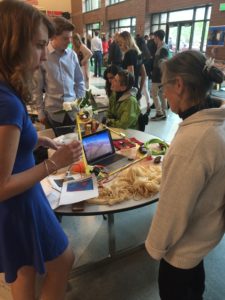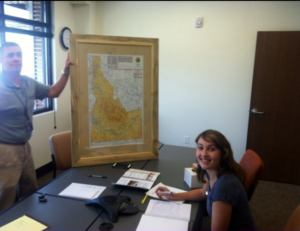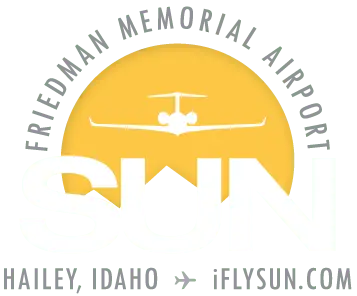Earlier this year we had the opportunity to help Emelia Morgan, a 10th-grader at Wood River High School, with her sophomore personal project—building, launching, and retrieving a weather balloon that she sent into near space. The craft, nicknamed NORTH STAR (Near Space Telemetry Aeronautics Research), collected photographic and scientific data from more than 100,000 feet above the earth’s surface.
We recently caught up with Emelia to chat about her project and ask a few questions:
What inspired this project?
When we were originally told about the project, I knew I wanted to do something with science and engineering, but beyond that I wasn’t really sure in what direction I was headed. I started researching interesting science projects, and one of the items I found was a weather balloon experiment on NOVA, a show on PBS. I found this so interesting that I decided to look up student versions of the experiment. That’s what led me to this project.
What was the biggest thing you’ve learned from this project? If you had to give any pointers on the project, what would they be?
The biggest thing that I learned was that it is extremely important to be patient, willing to learn from your mistakes, and to double-check all your work before each flight. One of the issues I experienced on my first flight was caused by not double-checking all the parts of my equipment. Because of this, my flight computer didn’t collect scientific data due to a faulty chip. Double-checking all my math was also important, which was shown in my first launch as well. In this round of first experiences, my balloon traveled off the predicted path during the descent because I had not calculated for a change in ground wind during the second half of the flight. This caused the balloon to land about two miles into Craters of the Moon, which was about a four-hour hike over the lava fields. My best advice for other students would be to allow a great amount of time for research: read a great deal about others’ experiences, take the time to learn how to do a NOTAM (notice to airmen), read all the air safety restrictions, and have a good understanding of how to read the weather and wind.
Is there anything else you’d like to add?
This project was much harder than I originally thought it would be due to the amount of work I had to do prepping for the launches, being prepared to cancel launches due to weather, and creating a flight trajectory that avoided mountainous and water filled-areas as well as military, airport, and government no-fly zones. Also, learning to how to call the NOTAMs was much harder than I expected. However, the overall project was very successful and I learned a great deal. I was able to track my balloon and take clear photographs from over 100,000 feet. I was very excited that I could show the curve of the earth and the black of space. It was especially gratifying to complete a research project that demonstrated such an extreme viewpoint of Idaho and Craters of the Moon National Park.
I would like to give a special thanks to Chris Pomeroy and the Friedman Memorial Airport. They provided me with a lot of important information on federal laws and helped answer my questions about weather, local laws, and NOTAMs.
We were thrilled to help Emelia with her project and guide her in the right direction when dealing with air traffic control, no-fly zones, NOTAMs, and to serve as an overall mentor from the airport. She did a fantastic job with her project and all the logistics that went into building out such an extensive test.




